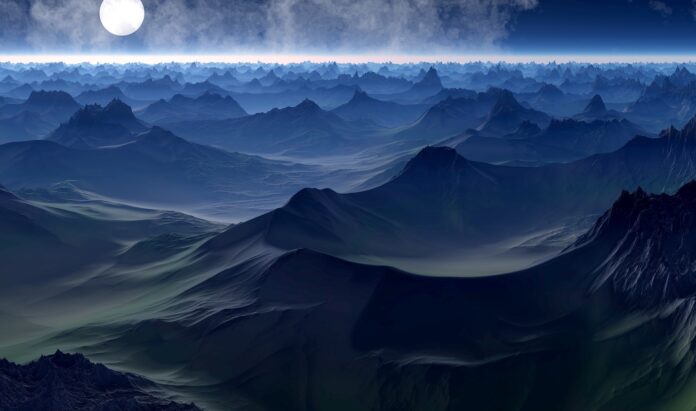Scientists have recently discovered something that, if it remains inexplicable, will send them scurrying to change everything we know about planet formation. Built through observation of the planets in our own solar system and their movement in relation to gravitation, existing models explaining the characteristics of exoplanets have thus far been assumed to be highly accurate. They had even managed to explain the intricacies of planet formation for rare examples like super-Earths and hot Neptunes, but now have come unstuck.
A consortium of international researchers have made waves by revealing the discovery of a celestial enigma that defies all the current models. Roughly Neptune’s dimensions but four times its mass, the planet presents an intriguing puzzle. Its density, surpassing even that of iron, has opened up the question of whether this celestial body is entirely solid or conceals an abyssal ocean capable of engulfing entire worlds. The origin theories posited by the discoverers, though speculative, offer no clear answers.
The mystery of the planet’s composition
The tale of this new planet, known as TOI-1853 b, unfolds much like many others. Initially flagged as an object of interest by the Transiting Exoplanet Survey Satellite (TOI), TOI-1853 is a star somewhat smaller than our Sun, with approximately 0.8 times its mass. Clues of a nearby planet emerged, leading to the discovery of TOI-1853 b. This exoplanet is a close neighbour, completing a full orbit around its host star in just 1.24 days.
Using the known orbital time, scientists were then able to calculate the distance at which the planet orbits its star. The combination of that distance, the size of the star, and the amount of light blocked by the planet made it then possible to estimate the planet’s size. That turned out to be about 3.5 times Earth’s radius, meaning it’s a bit smaller than Neptune.
This created the first conundrum as while Neptune sized planets exist, this combination of size and proximity to the star is unexpected. At that range the intense radiation from the star should have driven off the planet’s atmosphere, leaving only a stripped down rocky core.
The second conundrum was unveiled by tracking the star’s movements as the gravitational pull of TOI-1853 b tugged at it during its celestial dance. This gravitational interaction revealed the planet’s hefty mass, estimated to be a colossal 73 times that of Earth. The fact that it stands at roughly the same size as Neptune, but weighs four times more suggests a composition vastly different from Neptune’s.
Two potential answers
The density TOI-1853 b only leaves two plausible answers: 1) That it is a planet dominated by rocky material akin to Earth, with an extremely tenuous atmosphere amounting to less than 1% of the mass at most, or 2) That it consists of a more exotic blend with a sizeable rocky core enveloped by an immense water covering. This wouldn’t be your typical water, however, as its proximity to the host star subjects it to extreme pressures, potentially rendering some of it supercritical, with water near the rocky core forming high-pressure solids. The core itself would also be experiencing intense pressure-induced transformations. The properties of matter under such extreme conditions remain largely uncharted.
The mystery of how the planet formed
Yet, the mystery deepens even further, when we consider the planet’s past. Dust particle accumulation, a common step in planet formation, should have ceased before TOI-1853 b amassed its current mass, as even a smaller planet would disrupt the process. Its present location, where solid matter struggles to condense, makes its formation here improbable.
Researchers propose two intriguing scenarios. One suggests that a group of smaller planets initially formed further out, their orbits destabilized as the surrounding disk gradually evaporated. This could have led to collisions, resulting in shattered planets that eventually coalesced into a single entity. However, such a process typically yields multiple bodies, making it unlikely to amass the material equivalent of 73 Earths.
The alternative hypothesis posits the presence of gas giants farther out, with their gravitational interactions destabilizing each other’s orbits. One of these giants, now TOI-1853 b, adopted a highly eccentric orbit, swinging perilously close to the host star, enabling it to gather material from the inner reaches of the planet-forming disk. This could have caused a Jupiter-like planet to double in mass and shed its atmosphere into the star. Over time, tidal forces would have smoothed out its orbit.
While both scenarios are physically possible, they hinge on a series of improbable events. In the vast expanse of the universe, such phenomena might well occur, but the speed at which we’ve encountered this extraordinary case seems more than a little unlikely.
The presence of other planets within the system may hold the key to understanding TOI-1853 b’s origins. Unfortunately, the planet’s prodigious size and proximity to its star create a colossal signal, obscuring any other potential planetary companions. The researchers speculate that up to 10 Earth-sized planets could be orbiting nearby, evading detection. They hope that through continuing observation they will be able to unlock the secrets of this enigmatic system.


